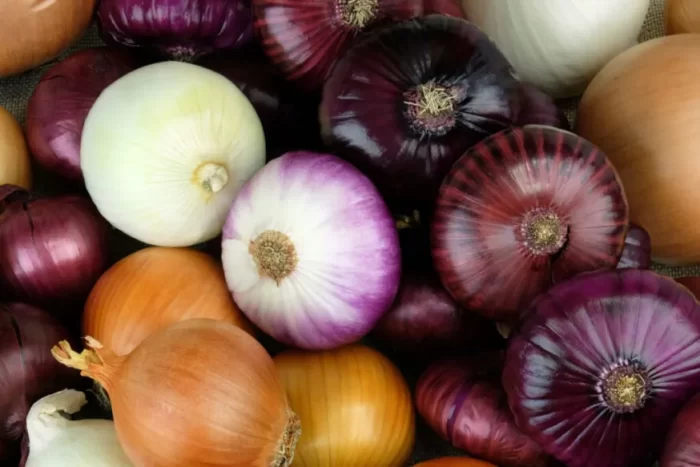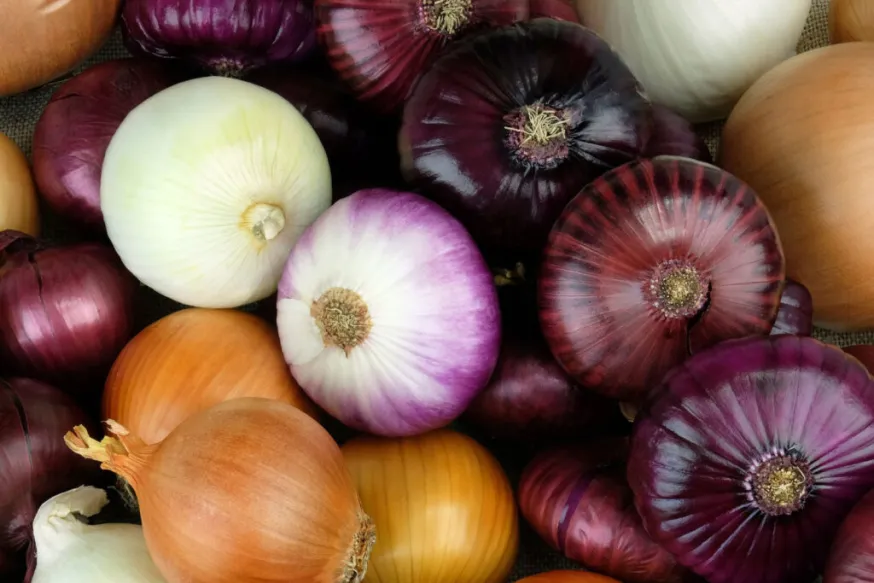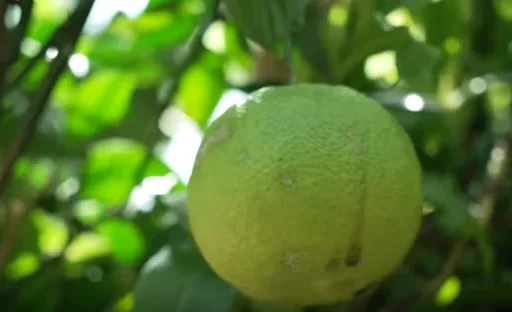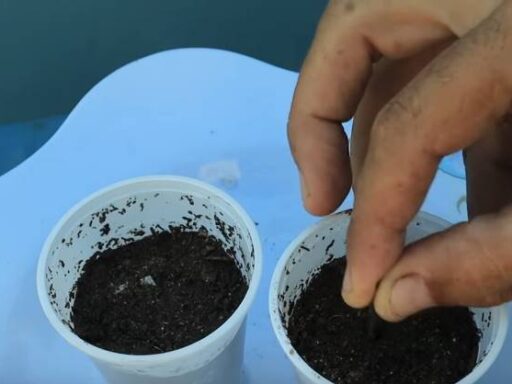Onions are an essential part of almost every dish we prepare, making them one of the most important crops to grow in your garden. They are easy to cultivate, require minimal space, and have very few issues with pests. Onions are also cold-tolerant, allowing you to grow them throughout different seasons.
In this article, we will explore the two primary ways to grow onions—by using onion sets or by starting from seed. Both methods have their benefits, but understanding their differences can help you choose the best option for your garden. We will also cover essential information about the types of onions, how to plant them, and tips for ensuring a successful harvest.
Growing Onions: Sets vs. Seeds
What Are Onion Sets?
Onion sets are small onion bulbs, approximately one inch in diameter, that are harvested from the ground and stored. When you buy them, they are in a dormant state, ready to be planted directly into the soil. Onion sets are the most common method used by gardeners because they are simple and quick to plant.
You can often find onion sets at garden centers or big-box stores in late winter or early spring. They are usually located near other dormant plant materials like seed potatoes or bare-root strawberries.
What Are Onion Seeds?
Growing onions from seed is another method that offers some advantages, although it requires more time and effort. Onion seeds are tiny, about the size of poppy seeds, and they need to be started indoors several weeks before transplanting into the garden.

Starting onions from seed allows you to grow a broader range of onion varieties. The biggest advantage is that onions grown from seed are less likely to go to seed prematurely, as sometimes happens with onion sets. Onions grown from seed also tend to be more robust, as they adapt better to your garden’s conditions.
Why Growing Onions From Seed Is Better
Although onion sets are easier to plant, growing onions from seed provides a higher likelihood of a successful harvest. Here’s why:
- Onions Are Biennial: Their life cycle spans two seasons. In the first season, onions grow from seed into green onions and develop their bulbs. In the second season, onions send up flower stalks to produce seeds.
- Less Likely to Bolt: Onion sets are already partway through their growth cycle. This can confuse the onions, making them think they are in their second season, causing them to flower early. When onions flower prematurely, they won’t develop large bulbs. With seeds, this confusion does not occur because they are in their first growing season.
- Stronger Growth: Onion seeds produce stronger plants that adapt better to the conditions of your garden. As long as you provide adequate water, fertilizer, and the right variety of onions for your climate, you are more likely to have a successful harvest.
Types of Onions: Long-Day, Short-Day, and Intermediate-Day
Before you start growing onions, it’s crucial to understand the different types of onions and how they respond to the length of daylight. Onions are divided into three categories: long-day, short-day, and intermediate-day onions.
- Long-Day Onions: These onions are best suited for northern regions where the days are long during the growing season. They require 14 to 16 hours of daylight to form bulbs.
- Short-Day Onions: Short-day onions are ideal for southern regions where the days are shorter. They need 10 to 12 hours of daylight to form bulbs.
- Intermediate-Day Onions: Intermediate-day onions fall between the two and are suitable for areas with moderate day lengths, such as the southeastern United States.
Choosing the right type of onion for your latitude is critical to achieving bulb formation. If you plant long-day onions in a low-latitude area, the days will never get long enough to trigger bulb formation, and your onions will not grow properly.
How to Start Onion Seeds
Starting onions from seed requires some planning but is relatively straightforward. Here’s a step-by-step guide to starting your onion seeds indoors:
- Choose a Seed Tray: Use a tray with small cells, and fill each with a seed-starting mix.
- Plant the Seeds: Place two or three seeds in each cell. Onion seeds are tiny, so it’s easy to over-seed. You can thin them out later by removing the weaker plants.
- Provide Light and Water: Onions need light to germinate, so place them in a sunny location or under grow lights. Keep the soil consistently moist but not waterlogged.
- Thin the Seedlings: Once the seeds have sprouted, thin them out, leaving the strongest seedling in each cell.
- Transplant: After about six weeks, the seedlings will be ready to transplant outdoors. Make sure the soil is well-prepared with fertilizer before transplanting.
Planting Onion Transplants in the Garden
Once your onion seedlings are ready to be transplanted, follow these steps:
- Prepare the Soil: Onions prefer well-drained, nutrient-rich soil. Add a balanced fertilizer, such as a 5-5-5 or 4-4-4 mix, to the planting holes. Onions are heavy feeders, so they need plenty of nutrients to grow.
- Space the Plants Properly: Plant your onions six inches apart. This gives each onion enough room to develop a large bulb. Crowding onions will stunt their growth.
- Water Regularly: Onions need consistent moisture to grow properly. Water deeply once or twice a week, depending on your local weather conditions.
- Mulch and Fertilize: After planting, top-dress the onions with a layer of mulch and fertilizer. This helps retain moisture and provides essential nutrients.
- Watch for Pests: While onions are generally pest-resistant, it’s still a good idea to keep an eye out for pests like onion maggots or thrips. If you notice any issues, use an organic pesticide to treat the problem.
Harvesting and Storing Onions
Onions are usually ready for harvest in late spring or early summer, depending on the variety and when they were planted. Here’s how to harvest and store onions for the best results:
- Check for Maturity: Onions are ready to harvest when the tops start to yellow and fall over. This signals that the bulbs have stopped growing.
- Cure the Onions: After harvesting, lay the onions out in a dry, well-ventilated area to cure for a week or two. This helps the outer layers of the onions dry out, making them last longer in storage.
- Store in a Cool Place: Once cured, store onions in a cool, dry location. Properly cured onions can last several months in storage.
Frequently Asked Questions
- How long does it take for onions to grow from seed?
- It takes about six to eight weeks for onion seeds to grow into seedlings ready for transplanting.
- Can I grow onions in containers?
- Yes, onions can be grown in containers, as long as the container is deep enough to accommodate their root systems and bulbs.
- What type of soil is best for onions?
- Onions prefer well-drained, sandy loam soil that is rich in organic matter and nutrients.
- When should I plant onion sets?
- Onion sets should be planted in late winter or early spring, depending on your climate.
- How often should I water onions?
- Water onions once or twice a week, making sure to water deeply.
- Do onions need full sun?
- Yes, onions require full sun to grow and form bulbs.
- Can I plant onions next to other vegetables?
- Onions make excellent companions for many vegetables, such as carrots, lettuce, and tomatoes.






